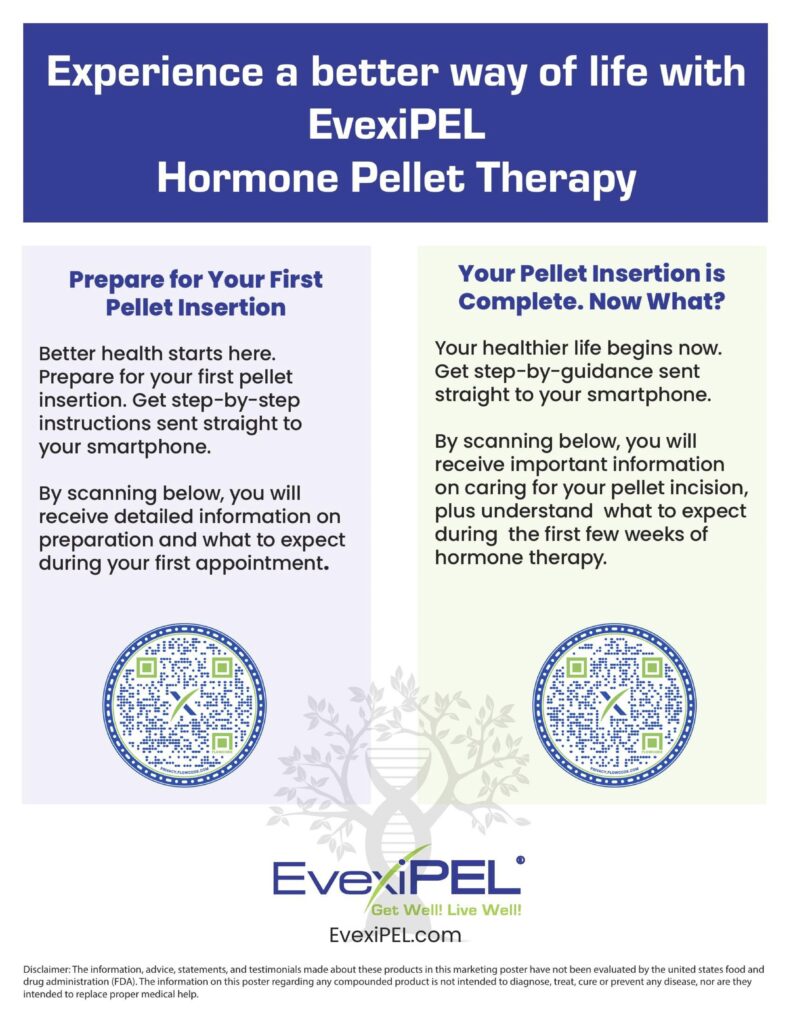Hormone Replacement Therapy
Have you ever asked yourself: “Why am I feeling so exhausted? How can I help lessen my anxiety? Why is it that I’m tired even after a full night’s rest? How can I get rid of this brain fog?”
If so, you are not alone. Here are Beautilase Med Spa, we are so excited to now offer Hormone Replace Therapy here in the RGV!
What is Hormone Replacement Therapy?
Hormone Replacement Therapy (HRT) is a medical treatment that involves replacing hormones in the body that have declined or been depleted. It is commonly used to alleviate the symptoms associated with hormonal imbalances, particularly in menopausal or postmenopausal individuals.
The primary hormones involved in HRT are typically estrogen and progesterone for women and testosterone for men. Here’s an overview of how HRT works in different contexts:
Menopausal Hormone Replacement Therapy (MHRT)
- MHRT is primarily used to alleviate the symptoms of menopause, such as hot flashes, night sweats, vaginal dryness, mood swings, and sleep disturbances.
- Estrogen is the main hormone replaced in MHRT, and it can be administered in various forms, including pills, patches, creams, gels, and vaginal rings.
- In some cases, progestin (a synthetic form of progesterone) is also prescribed alongside estrogen, especially for women who still have their uterus. This combination helps protect the uterine lining and reduce the risk of uterine cancer.
HRT is not without risks and side effects, and its use should be carefully considered in consultation with a healthcare provider. The decision to undergo HRT should take into account factors such as an individual’s medical history, age, overall health, and the potential risks and benefits associated with the therapy.
Risks may include an increased risk of certain medical conditions, such as blood clots, stroke, and breast cancer (for some forms of MHRT), among others. Therefore, it is important for individuals to have a thorough discussion with their healthcare provider to determine if HRT is a suitable option for them and what the most appropriate form of therapy is based on their specific needs and circumstances.


Hormone pellets, also known as hormone pellet therapy or pellet hormone replacement therapy (HRT), are one form of delivering hormone replacement therapy. Whether hormone pellets are “better” for HRT depends on individual circumstances, preferences, and medical considerations. Here are some potential advantages and disadvantages of hormone pellets compared to other HRT methods:
Advantages of Hormone Pellets:
- Steady Hormone Levels: Hormone pellets provide a continuous and steady release of hormones into the bloodstream over an extended period, typically three to six months. This can result in more stable hormone levels compared to other forms of HRT, such as oral medications or injections, which can lead to hormone level fluctuations.
- Convenience: With hormone pellets, individuals don’t need to remember to take daily medications or undergo frequent injections. This convenience can be particularly beneficial for those who find it challenging to adhere to a daily regimen.
- Fewer Dosing Adjustments: Because hormone pellets provide a slow and consistent release of hormones, they often require fewer dose adjustments compared to other forms of HRT. This can reduce the need for frequent doctor visits for dose modifications.
- Long-Lasting Effects: A single hormone pellet insertion can provide relief from symptoms for several months, which may be appealing to individuals who prefer less frequent intervention.
Disadvantages and Considerations:
- Invasive Procedure: Inserting hormone pellets typically requires a minor surgical procedure, usually in the form of a small incision or implantation under the skin. Some people may be uncomfortable with this aspect of the treatment.
- Lack of Flexibility: Once a hormone pellet is inserted, it cannot be easily adjusted or removed if the patient experiences side effects or wants to discontinue treatment.
- Cost: Hormone pellet therapy can be more expensive upfront, as the cost of the procedure and the pellets themselves may be higher than other forms of HRT.
- Limited Availability: Not all healthcare providers offer hormone pellet therapy, so access to this treatment may be limited in some areas.
- Potential Risks: As with any form of HRT, hormone pellet therapy carries certain risks, including infection at the insertion site, bruising, and the possibility of hormone levels becoming too high or too low.
Whether hormone pellets are a better option for HRT depends on an individual’s specific medical needs, lifestyle, and preferences. It’s essential to consult with a healthcare provider who can assess your situation, discuss the pros and cons of different HRT methods, and help you make an informed decision about the most suitable treatment for you. Additionally, hormone pellet therapy may be more commonly used for certain types of hormone replacement, such as testosterone replacement in men, than for other hormone replacement needs.
Hormone pellets used in hormone replacement therapy (HRT) are small, cylindrical or oval-shaped implants that are typically about the size of a grain of rice. They are solid and bioidentical, meaning they contain hormones that are structurally identical to those naturally produced by the body. The appearance of hormone pellets can vary depending on the specific hormones and formulations used, but here are some general characteristics:
- Size: Hormone pellets are usually quite small, ranging from 3 to 10 millimeters (approximately 1/8 to 3/8 inch) in length. The size may vary based on the specific hormone dosage and the manufacturer’s formulation.
- Color: The color of hormone pellets can vary, but they are typically white or off-white. The color may be influenced by the materials used to bind and shape the pellets.
- Texture: Hormone pellets are solid and have a smooth texture. They are designed to be inserted under the skin, where they gradually release hormones into the bloodstream.
- Biocompatible Coating: Some hormone pellets may have a biocompatible coating to help with the insertion process and to ensure a controlled and consistent release of hormones over time.
- Sterile Packaging: Hormone pellets are usually provided in sterile packaging to maintain their integrity and reduce the risk of infection during the insertion procedure.
The specific appearance of hormone pellets may vary depending on the manufacturer and the type of hormones they contain (e.g., estrogen, testosterone, or a combination). The pellets are typically inserted subcutaneously (under the skin), often in the buttocks or the lower abdomen, during a minor surgical procedure performed by a healthcare provider.
It’s important to note that hormone pellets are prescribed and administered by healthcare professionals as part of hormone replacement therapy. The choice of hormone pellet size and hormone type is determined by the patient’s individual medical needs and the healthcare provider’s recommendations.
The duration of effectiveness for hormone replacement therapy (HRT) pellets can vary depending on several factors, including the specific hormones used, the dosage, an individual’s metabolism, and their response to the treatment. Typically, HRT pellets can last anywhere from three to six months or even longer. Here are some key points to consider:
- Hormone Type: The type of hormone used in the pellets can influence how long they last. For example, testosterone pellets for men are often designed to provide a slow and steady release over several months. In contrast, estrogen pellets for menopausal women may have a different release profile.
- Dosage: The dosage of hormones contained in the pellets is another important factor. Higher dosages may be designed to last longer, but this can vary based on the specific formulation.
- Individual Variation: Each person’s body processes and metabolizes hormones differently. Some individuals may metabolize hormones more quickly, leading to a shorter duration of effectiveness, while others may experience a longer duration.
- Hormone Levels: The goal of HRT is to maintain hormone levels within a therapeutic range. As hormone levels decline over time, the effectiveness of the pellets diminishes, and they may need to be replaced.
- Physician Monitoring: It’s crucial for individuals undergoing HRT with pellets to be regularly monitored by their healthcare provider. Hormone levels are typically checked through blood tests, and adjustments to the treatment plan, including the timing of pellet replacement, can be made based on these results.
- Pellet Type: There may be different formulations and brands of hormone pellets, each with its own expected duration of effectiveness. The specific product used can affect how long the pellets last.
Typically, individuals receiving HRT pellets will have them replaced every three to six months during a follow-up appointment with their healthcare provider. The provider will assess the patient’s hormone levels, symptoms, and any potential side effects to determine the appropriate timing for pellet replacement. The goal is to maintain stable hormone levels and symptom relief throughout the course of treatment.
It’s essential for individuals considering or undergoing HRT with pellets to have a thorough discussion with their healthcare provider about the treatment plan, including the expected duration of effectiveness and any potential risks or side effects associated with the specific hormone replacement therapy they are receiving. This allows for personalized and effective management of hormone levels and symptoms.
In most cases, you should not feel hormone replacement therapy (HRT) pellets once they have been inserted by a healthcare provider. At Beautilase Med Spa, we have sent our Board Certified Nurse Practitioners to specialized training on Hormone Replacement Therapy.
The HRT pellets are typically inserted just under the skin in a minor surgical procedure. They are placed in a location where they won’t cause discomfort or be noticeable during daily activities. Here are some important points to consider:
- Insertion Site: HRT pellets are commonly inserted in areas such as the buttocks or the lower abdomen. These areas are chosen for their ease of insertion and because they provide good absorption of the hormones into the bloodstream.
- Local Anesthesia: Prior to the insertion of HRT pellets, a local anesthetic is usually administered to numb the area, which helps minimize any discomfort during the procedure.
- Minor Discomfort: While the insertion itself is typically not painful, some individuals may experience minor discomfort or pressure at the insertion site for a short period afterward. This discomfort is generally mild and temporary.
- Size and Location: The size of HRT pellets is relatively small, typically about the size of a grain of rice. Their small size and placement beneath the skin mean that they are not felt or visible beneath the surface.
- Absorption: Once inserted, the pellets gradually release hormones into the bloodstream over time, providing a continuous and steady dose. You should not feel the hormones being released.
It’s essential to follow your healthcare provider’s post-insertion care instructions, which may include avoiding strenuous physical activity or certain movements for a brief period to ensure the pellets settle properly and are effectively absorbed.
If you do experience any unusual sensations, pain, or discomfort at the insertion site, it’s important to contact your healthcare provider promptly, as this could be a sign of a complication, such as infection or improper placement. Otherwise, most individuals do not notice or feel HRT pellets once they are in place, and they can go about their daily activities without disruption.
Request a Consultation
Email [email protected] to find out how Hormone Replacement Therapy can help you live your best life!
